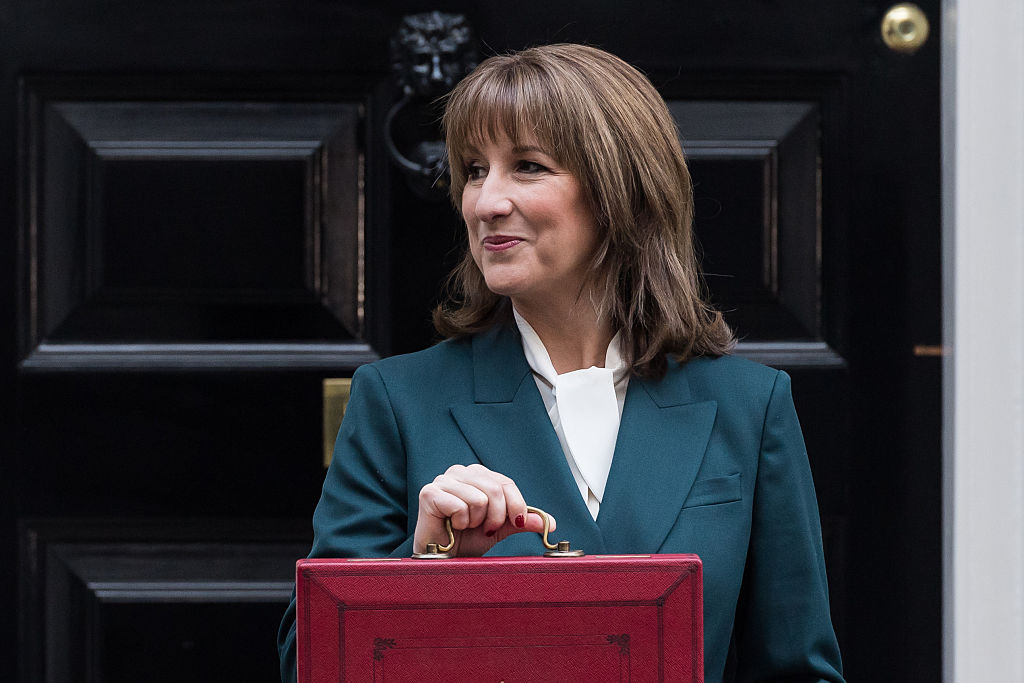Gender pension gap rises to £113,000 – how to fill the shortfall and boost your pension
The gender pension gap is growing, says Scottish Widows, with a third of women facing poverty in retirement


Women face a gender pension gap of £113,000, with career breaks pushing one in three women into pension poverty.
This is the finding of Scottish Widows’ 21st edition of its annual Women and Retirement Report, which looks at pensions and the issues which typically affect women when creating a decent retirement nest egg.
Last year, the insurer said the gender pension gap was £100,000, and warned that it would take 20 years to fix unless “decisive action was taken”.
MoneyWeek
Subscribe to MoneyWeek today and get your first six magazine issues absolutely FREE

Sign up to Money Morning
Don't miss the latest investment and personal finances news, market analysis, plus money-saving tips with our free twice-daily newsletter
Don't miss the latest investment and personal finances news, market analysis, plus money-saving tips with our free twice-daily newsletter
Worryingly, it has now widened to £113,000. The median total private pension savings for women at retirement is £173,000 versus £286,000 for men, according to Scottish Widows. This gives a gender pension gap of 32%.
Susan Hope, retirement expert at Scottish Widows, said: “Millions of women in the UK are living with the gender pension gap and they don’t even know it.”
While the private pension gap has grown, there is good news for women in terms of the state pension, as the gender shortfall has shrunk to less than 1%. Figures from the Department for Work and Pensions revealed in August that the gender pension gap had been almost eliminated when it comes to the state pensions of people retiring today.
What’s driving such a big gender gap in private pensions?
There are various factors contributing to the gender pension gap, with career breaks having a significant impact on pension saving.
More than half (58%) of women at or near retirement have taken a career break compared to just 12% of men, the Scottish Widows report reveals.
Women are 12 times more likely to take a break in their career to raise children (36% versus 3%), leading to loss of income and gaps in their pension contributions.
By age 55, one in four (24%) women have been out of work for more than five years, which could result in a £70,000 hit at retirement.
For example, a woman taking a five-year career break at 35 years old would reach age 67 with a pension worth £512,000. This is £69,380 less than those who don’t take a break in their career, with the gap driven by both missed contributions and lost investment growth.
While childcare is the main reason for career breaks, health, menopause and looking after elderly relatives also play a role.
The research also found that two-fifths (40%) of women didn’t plan financially for their career break, and more than half (56%) never considered the impact it would have on their retirement.
As a result of these career breaks and the widening gender pension gap, Scottish Widows warns that more than a third (36%) of women face poverty in retirement.
In terms of what the shortfall looks like as an annual pension income, women are projected to achieve a median annual retirement income after expected housing costs that is 32% lower than men’s (£13,000 for women versus £19,000 for men).
Dame Denise Lewis, a former Team GB track and field athlete who is working with Scottish Widows on the launch of their report, says it’s important to have a financial plan that gives you security when you have a career break and “when your income is more up and down”.
She adds: “Crucially it’s not only a challenge at the time, it also has a real impact on our futures. The more we can encourage women to start those vital kitchen table conversations about what their future looks like and how they’ll afford it, the better.”
How to overcome the gender gap and boost your pension
Scottish Widows argues that we need to “make sure career breaks don’t break women’s future financial security”.
Hope says that firstly, awareness and take-up of shared parental leave policies must be improved. “This policy is critical, yet 80% of women who had children in the last 10 years didn’t take advantage of it. This represents around 2.7 million working mothers.”
Secondly, spouses and partners should be actively saving into women’s pensions during any career breaks, if possible. “This is also known as third-party contributions and, while often overlooked, is a helpful financial planning tool. Not only can it maximise tax relief for those who have used up their allowance, this can help to plug gaps in pension contributions while earning power is limited,” explains Hope.
We have more on this in our guide: Can you pay into someone else’s pension – and how much can you pay?
There are other ways to boost your pension and make sure you’re on track to achieve your retirement goals. This can include using the 1% pension rule – contributing just 1% extra into your workplace pension and reaping big returns by the time you retire thanks to compound interest - and using salary sacrifice to maximise your pension and reduce your tax bill.
It’s also worth checking you’re not overpaying on pension and investment fees. If you have lots of small pension pots, it can be a good idea to combine them to reduce the admin and hassle, and potentially pay a lower overall fee.
Samantha Gould at now: pensions, a workplace pension provider, echoes Lewis’s point about talking to loved ones about pensions.
“If we look at the gender pension gap, to catch up, women would need to start saving from the age of three.
“Together, we need to shine a light on the gender pension gap because awareness must come before action. Too often, people avoid talking about pensions because they feel confusing or too far away, but the earlier you start saving, the more time your money has to grow.”
Get the latest financial news, insights and expert analysis from our award-winning MoneyWeek team, to help you understand what really matters when it comes to your finances.

Ruth is an award-winning financial journalist with more than 15 years' experience of working on national newspapers, websites and specialist magazines.
She is passionate about helping people feel more confident about their finances. She was previously editor of Times Money Mentor, and prior to that was deputy Money editor at The Sunday Times.
A multi-award winning journalist, Ruth started her career on a pensions magazine at the FT Group, and has also worked at Money Observer and Money Advice Service.
Outside of work, she is a mum to two young children, while also serving as a magistrate and an NHS volunteer.
-
 London claims victory in the Brexit wars
London claims victory in the Brexit warsOpinion JPMorgan Chase's decision to build a new headquarters in London is a huge vote of confidence and a sign that the City will remain Europe's key financial hub
-
 Rachel Reeves's Autumn Budget: What it means for the UK
Rachel Reeves's Autumn Budget: What it means for the UKOpinion A directionless and floundering government has ducked the hard choices at the Autumn Budget, says Simon Wilson